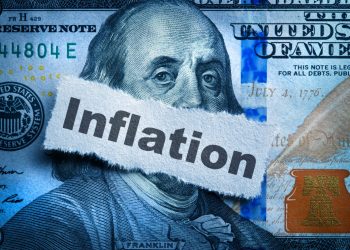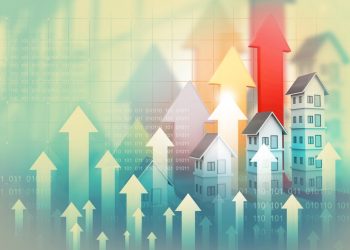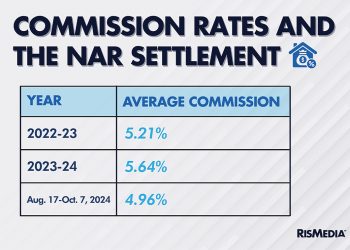 RISMEDIA, June 8, 2010—As the green movement continues to gain popularity across the real estate market, real estate professionals and consumers alike are curious as to what is in store for the population as we continue to focus on energy concerns and green housing. In this month’s Power Broker Roundtable, industry leaders Tom Wilkins, Bob Hamrick and Kurt Heater discuss whether we can use public awareness of green issues to boost our bottom lines.
RISMEDIA, June 8, 2010—As the green movement continues to gain popularity across the real estate market, real estate professionals and consumers alike are curious as to what is in store for the population as we continue to focus on energy concerns and green housing. In this month’s Power Broker Roundtable, industry leaders Tom Wilkins, Bob Hamrick and Kurt Heater discuss whether we can use public awareness of green issues to boost our bottom lines.
Moderator:
Steve Brown, Special Liaison for Large Firm Relations, NAR
Participants:
Tom Wilkins, CEO, Better Homes & Gardens, The Poconos, Pennsylvania
Bob Hamrick, CEO, Coldwell Banker Premier, Las Vegas, Nevada
Kurt Heater, Pres., Prudential Sherm Heater, Grant’s Pass, Oregon
Steve Brown: These days, it seems the hottest topic at cocktail parties is global warming. Some say greenhouse gases are dooming our grandkids to a future of drought and flooding. Skeptics argue that climate change is inevitable and beyond the scope of anything we humans do. While the truth is likely somewhere in between, most people agree that sensible conservation and practical oversight is probably a healthy approach –and the efforts we make today will put energy-saving dollars in our pockets tomorrow. That’s one reason most of us practice some sort of conservation effort; recycling trash, reducing our use of paper, or heating our swimming pools with solar panels. It’s also the reason why NAR built the first LEED-certified* green building in Washington, DC. NAR believes REALTORS® need to be on the leading edge of social concerns—which is also why they developed NAR’s Green Designation for today’s real estate professionals—and why they closely monitor all legislation regarding environmental issues. I have earned the Green Designation myself because I believe it’s important to be at the forefront of this movement. As green issues take a more prominent place in social discourse, we take justifiable pride in our industry’s commitment to the environment. A visit to NAR’s Green Resource Council (www.greenresourcecouncil.org) will give you more information. But can we use public awareness of green issues to boost our bottom lines? For some answers, we’ve invited a panel of real estate pros from various parts of the country. Tom, what’s the situation in Pennsylvania?
Tom Wilkins: The economic climate has had an effect here—especially in the Poconos, where the inventory is heavily loaded with “as is” vacation properties rather than new construction. So today, most people are concerned with savings, like tax advantages on a second home. The key to getting their attention on green issues would be, “how much money will that solar heating system save me in the course of a year?”
Bob Hamrick: Yes, I think the idea of “going green” started to gain momentum before the housing downturn hit. Today, a lot of Las Vegas buyers—and most investors—are pretty focused on opportunistic purchases like REOs and short sales. As things start to improve, real estate consumers will turn their attention back toward “green.”
Kurt Heater: Personally, we built our own home to take advantage of solar energy. We knew it would take years for energy savings to offset the initial costs, but I’m a child of the original Earth Day movement, so I suppose it rubbed off on me. While I think that builders of new construction are tending toward energy conservation, I think the rush to buy cheap right now is diverting buyers’ attention a bit. We had a huge run-up in prices between 2001 and 2005, and short sales and foreclosures at this point are probably 50% of our business now.
Steve Brown: So if I’m hearing you right, as the market stabilizes, consumers are taking a broader interest in green issues?
Tom Wilkins: I think that’s definitely true. In our case, the Better Homes and Garden brand is committed to promoting good environmental practices. Almost all of our agents have NAR’s Green Designation. I think it’s safe to say as Realtors, we all got caught up in staying alive these past couple of years—but as the market improves the focus will shift back to some extent toward practical energy concerns. We need to be prepared for that.
Bob Hamrick: I agree. The effort to compete may have slowed down the green effort, but I expect today’s move toward green construction will become the standard for the future. The new CityCenter in Las Vegas, which is really an extraordinary resort destination, was designed and built to conserve energy and preserve natural resources. It’s just a more responsible approach to building, and I think that signals a growing trend. Getting our agents green-certified and knowledgeable is certainly a place to start.
Kurt Heater: Yes, I think most people respect the green concept. We need to up the appeal by balancing environmental sustainability with economic practicality.
Steve Brown: In other words, builders need to keep on building green, and Realtors need to be prepared to help customers understand the practical advantages.
Tom Wilkins: I would say so. The customer’s first question to himself will always be, do I like the house? If he doesn’t, the issue of energy conservation won’t be enough to change his mind. But if he does, then energy savings and conservation become an undeniable bonus.
Steve Brown: So we need to be prepared to help our customers understand exactly what “going green” means—both in terms of what we gain and what we save?
Kurt Heater: Right. Which, of course, is the purpose of NAR’s Green Designation. I suppose that’s what’s in it for us…another way to add value to services.
Bob Hamrick: Well said. Adding value is key. It’s how we outperform the competition.
*LEED (Leadership in Energy and Environmental Design) is a benchmark building standard set by the U.S. Green Building Council.










